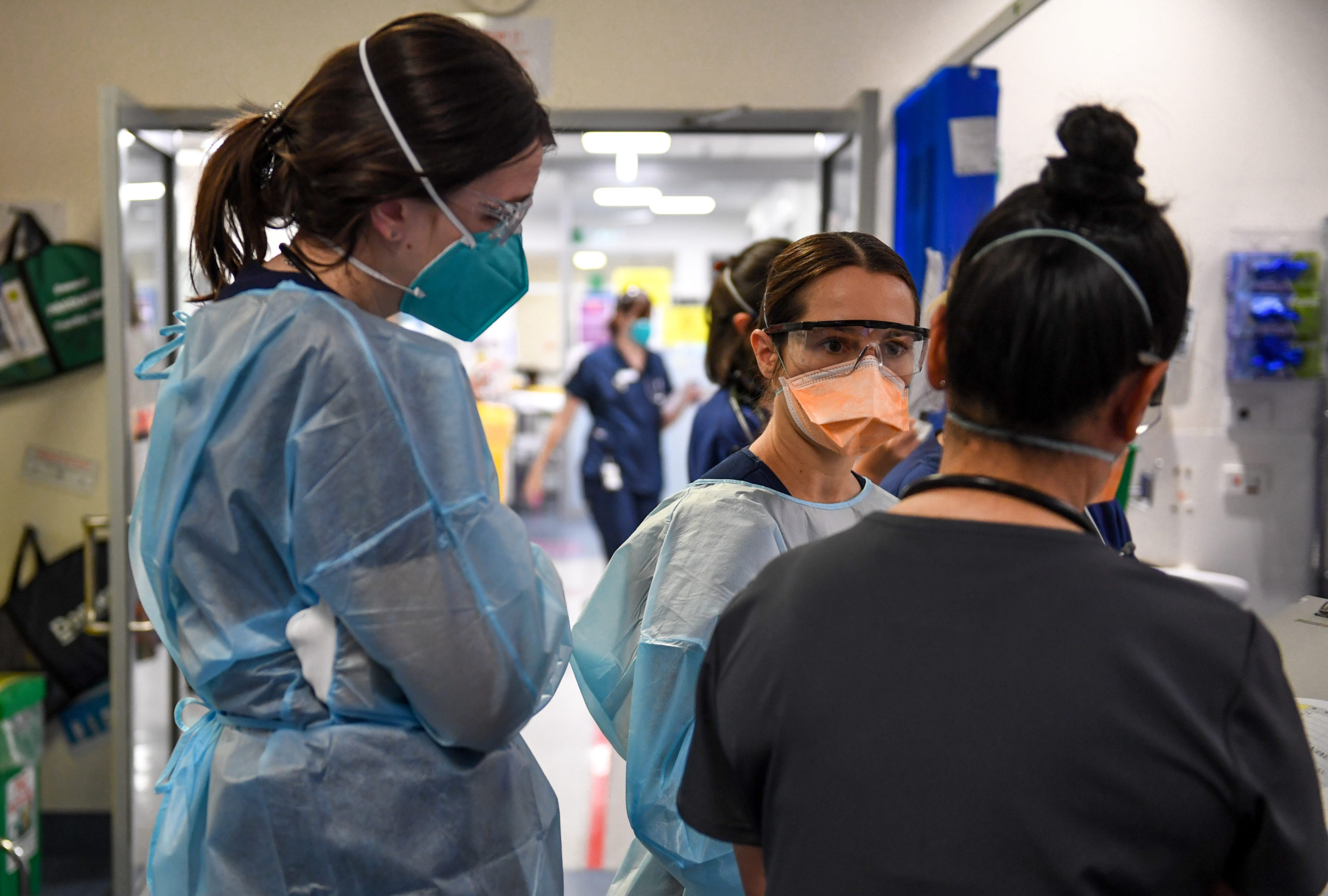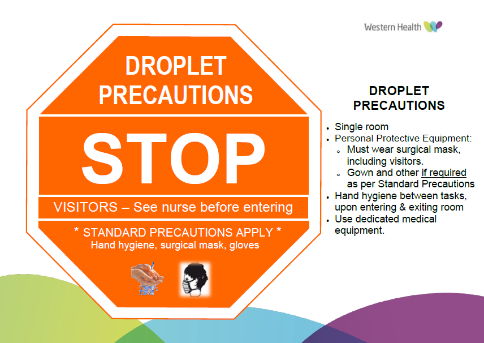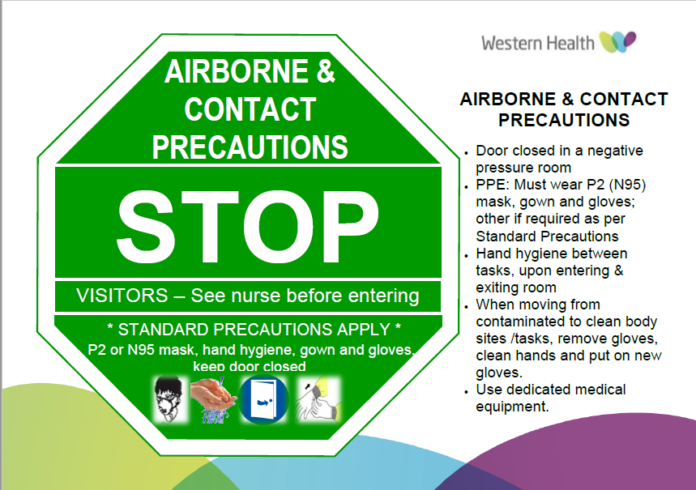
April 18, 2021
Overview:
The use of infection control procedures and policies along with frequent hand hygiene measures, ANTT/sterile techniques and keeping the healthcare environment and equipment clean has been effective in reducing the prevalence of health care associated infections.
Western Health guidelines highlight the importance and use of standard precautions as a proven and effective method to prevent the spread of multi resistant organisms or transmissible pathogens.
Why is this important:
The use of “Standard Precautions” is essential as the primary strategies for the successful minimisation of health care associated infections. Standard precautions and are to be used for the treatment and care of all patients regardless of their perceived or confirmed infectious status.
Standard Precautions include:
- Practicing good hygiene , particularly compliance with the 5 Moments of hand hygiene;
- The use of protective barriers, which include:
- Gloves when handling or having potential contact with blood and/or body fluids, non-intact skin or mucous membranes;
- Gowns when there is potential for splashes of blood or body fluids to a staff member’s clothes or as part of ANTT; OR
- Plastic aprons if staff are bare below their elbows.
- Eye shields/goggles when there is potential for splashes of blood or body fluids to a staff member’s eyes; AND
- Masks as part of ANTT or when performing procedures that could lead to aerosolisation of blood or body fluids (e.g. swabbing a patient’s throat, suctioning secretions, intubation).
- Respiratory hygiene and cough etiquette;
- Aseptic non-touch technique;
- Safe handling and disposal of sharps;
- Routine environmental cleaning;
- Reprocessing of reusable medical equipment and instruments;
- Waste management; and
- Appropriate handling of linen.
Important aspects of standard precautions are:
- Staff are to be ‘Bare Below The Elbow’:
– All those in direct patient care are to be bare below the elbow except for a single simple wedding band.
- Engage consumers in transmission based precautions
– Educate and encourage consumers to use hand hygiene practices + cough etiquette.
– Encourage visitors not to attend the hospital if they are unwell.
Western Health guidelines acknowledge that standard precautions are not always enough to contain highly transmissible pathogens and as such has developed guidelines to limit the risk of transmission.
These are used in the health care setting to prevent the spread of MROs and/or highly transmissible pathogens that may not be contained with standard precautions alone.
Transmission Based Precautions include:
- Droplet Precautions for pathogens transmitted by respiratory secretions (e.g.: Influenza, Pertussis, Meningococcal Disease, RSV, Norovirus);
- Contact Precautions for pathogens transmitted by (direct or indirect) contact with patient or patient environment (e.g.: multi drug resistant organisms such as MRSA, gastroenteritis and scabies);
OR combination of these precautions for organisms transmitted by multiple routes of transmission.
The WH PPG on Standard and Transmission Based precautions can be vied through this link.
The use of PPE:
PPE provides an important barrier and effective approach to minimising the contact risk with transmissible pathogens. It is important to know where to access the appropriate PPE in your department and which are the appropriate items of PPE to use.
To learn more Click Here to access this easy to use PPE Quick reference Guide.
PPE is not just about knowing which is right equipment to use, but also knowing how to wear it correctly. Knowing how to fit and wear the appropriate personal protective equipment is vital to your own health and to reduce the risk of transmission. If donning and doffing are done incorrectly you are putting yourself, your colleagues and your patients at risk. The following document provides an easy to understand guide to correctly fit, don and doff PPE. READ MORE
WH has developed some great visual guidelines to be used in clinical environments as an alert, but also to remind staff how to prepare for and provide care in situations where the following precautions have been identified.
Standard Precautions

Contact Precautions

Droplet Precautions

Airborne Precautions

Airborne & Contact Precautions

Droplet & Contact Precautions

Patient isolation:
Many patients with a recognised or suspected transmissible illness will be cared for in a negative pressure isolation room in order to prevent cross-contamination of air between rooms, therefore reducing the risk of transmission to others. To understand more about how negative pressure isolation rooms work and how to ensure they operating correctly click on the following link: Isolation Room – Under Negative Pressure
Further Reading:
The Australian Commission on Safety and Quality in Health Care has produced a document outlining nationally accepted guidelines on infection control and prevention principles and priority areas of action. The document can be found by clicking on the following link:
Australian Guidelines for the Prevention and Control of Infection in Healthcare







